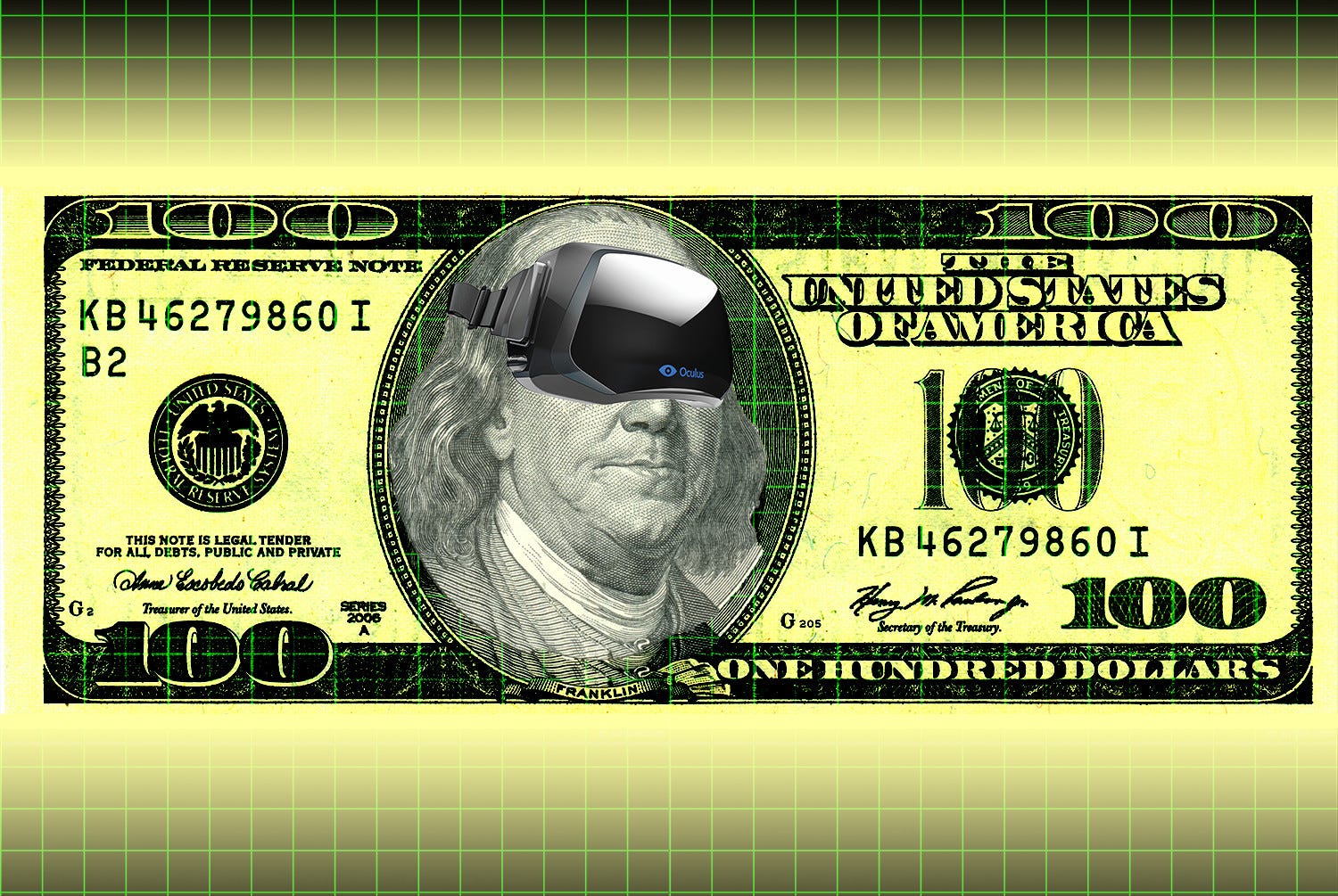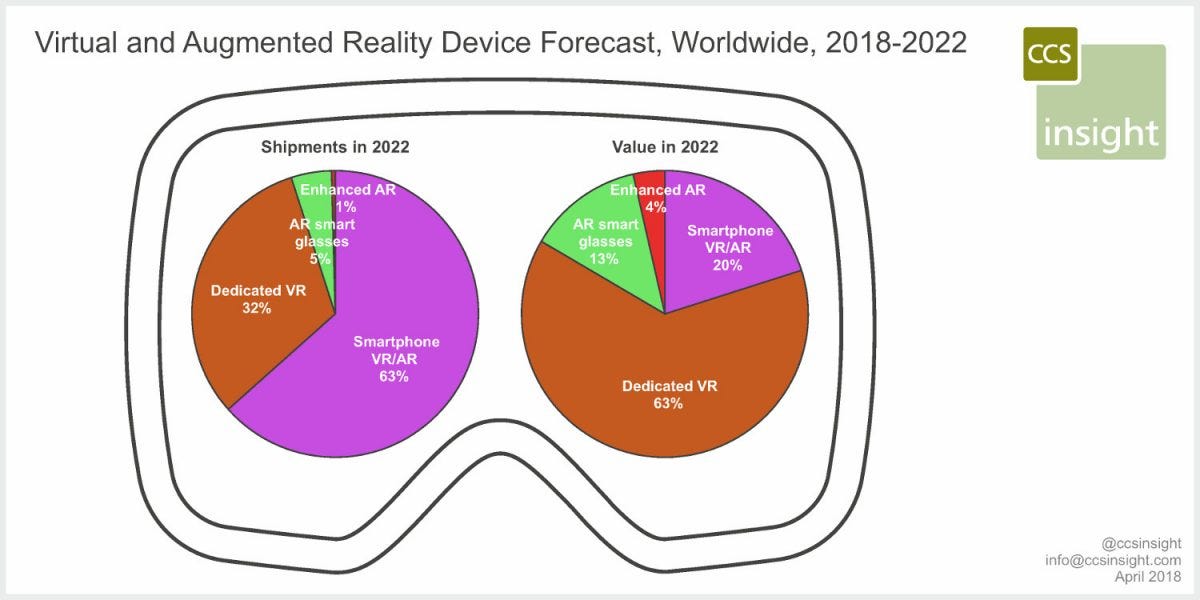Report: VR and AR Device Market to hit $1.8 billion in 2018
Report: VR and AR Device Market to hit $1.8 billion in 2018


Latest forecast by analyst firm CCS Insight paints an optimistic picture of Immersive Tech adoption.
The report published today by global analyst company CCS Insight shows the worldwide market for virtual reality (VR) and augmented reality (AR) head-worn devices growing by an average of 50 percent annually over the next five years. In 2022, a total of 121 million units will be sold, with a value of $9.9 billion.
The firm’s research indicates that VR headsets have been the main source of growth in unit sales to date, and although this trend is expected to continue — particularly with smartphone-powered mobile headsets — there is also an expectations that the next generation of HMDs will ignite a new wave of consumer interest.
“We expect stand-alone headsets like the Oculus Go and HTC Vive Focus to ignite a new wave of growth that will help broaden the appeal of virtual reality, particularly with businesses and in education,” says George Jijiashvili, CCS Insight’s senior analyst for wearables.
Gaming remains the primary reason for sales of VR devices and this is unlikely to change over the next few years. The research shows that nearly 70 percent of customers who own a dedicated VR headset such as an Oculus Rift, HTC Vive or Sony PlayStation VR have bought games for it, and more than half of smartphone VR headset owners have bought games for their device.
“There’s a growing array of exciting new content being developed. We were encouraged to see in our latest consumer survey that virtual tourism, remote participation in events such as music concerts, and virtual social interactions are all emerging as further uses for virtual reality. Watching video is also proving popular, particularly on smartphone-based headsets”.
AR smart glasses also show much promise for market growth according to Jijiashvili, as the report notes that in spite of businesses recognizing the potential of the technology, they have so far limited their adoption to purchasing a few units (just 24,000 AR smart glasses were purchased by business in 2017). However, CCS Insight predicts that over the next few years businesses will move from limited trials to wider deployment, with sales reaching a milestone of 1 million units in 2022.
“Given augmented reality is one of the hottest new technology areas in smartphones, it’s not surprising that interest is mounting in augmented reality glasses. Billions of dollars are being invested in this technology and we’ve seen significant improvements in the size, weight and design of smart glasses over the past 12 months. The potential of this technology is clear, but so far most companies are evaluating a few units to see how the technology fits into their operations”.
The firm also notes that consumer smart glasses adoption will probably move at a separate pace and in different directions than more enterprise-centric products. It predicts that under the right conditions, we could be looking at consumer smart glasses sales around the 4.5 million mark by 2022.
“We’re encouraged by the technology developments in smart glasses for consumers. Products such as Intel’s Vaunt glasses are a clear signal of the direction these devices are moving in, with a design little different from a pair of standard prescription glasses. It only takes a big company like Apple to jump into the market and we could be looking at market of millions of smart glasses in no time at all,” Jijiashvili concludes.
According to CCS insight, the forecast presents three scenarios (core, low and high) that plot the effects of different market developments, and is part of a broader suite of research into VR and AR devices, including an extensive database of over 100 devices in this area.


Key Insights from the report include:
- Research firm CCS Insight forecasts 22 million virtual reality (VR) and augmented reality (AR) headsets and glasses will be sold in 2018, with fivefold growth to 121 million units in 2022.
- Smartphone VR will account for the bulk of the sales volume, but value lies in dedicated VR devices, which will account for 63 percent of the total market value of $9.9 billion in 2022.
- AR smart glasses for consumers have encouraging potential, particularly if a large consumer electronics firm such as Apple decides to enter the market.
- Enterprise adoption of VR and AR remains an important element, but it will take many years to deliver meaningful volumes of sales.
For companies looking to get into Immersive technologies such as VR/AR/MR/XR our Virtual Reality Consultancy services offer guidance and support on how best to incorporate these into your brand strategy.
Alice Bonasio is a VR Consultant and Tech Trends’ Editor in Chief. She also regularly writes for Fast Company, Ars Technica, Quartz, Wired and others. Connect with her on LinkedInand follow @alicebonasioon Twitter.
